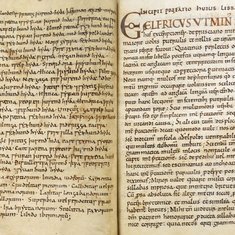Featured Quizzes
User Quizzes
Create Quiz
Data and Charts
Badges and Games
About JetPunk
JetPunk Shop
Dark Mode

Anglo-Saxon 'Tribes' on a Map
First compiled in around the seventh to eighth centuries, the 'Tribal Hidage' lists thirty-five Anglo-Saxon 'tribes' (i.e. peoples/kingdoms) and their respective size/wealth measured in units of land called 'hides'. How many of the Anglo-Saxon peoples recorded in the Tribal Hidage can you name?
Modern English equivalents of names are included where applicable.
The positions of peoples on the map are approximate; see stickied comment.
Hæthfeldlande (Hatfieldland) is excluded; see stickied comment.
Rate:
Last updated: May 17, 2024
You have not attempted this quiz yet.
More quiz info >>
| First submitted | May 16, 2024 |
| Times taken | 9 |
| Average score | 20.6% | Report this quiz | Report |
7:00
Enter answer here
0
/ 34 guessed
Time Used
00:00
Best Time
00:00
The quiz is paused. You have remaining.
Scoring
You scored / = %
This beats or equals
% of test takers
also scored 100%
The average score is
Your high score is
Your fastest time is
Keep scrolling down for answers and more stats ...
| |
|
New and Popular
Save Your Progress
English History
Quiz series by jdmercia
Copyright H Brothers Inc, 2008–2024
Contact Us | Go To Top | View Mobile Site

Hæthfeldlande (Hatfieldland) was mentioned in the Tribal Hidage but was recorded as part of Lindsey, without an independent hidage assessment. Therefore, while it is one of the thirty-five tribes listed, I have decided to see it as included within Lindsey.
The list likely originated in Mercia, although some historians think the absence of the Northumbrian kingdoms (Bernicia and Deira) indicates a Northumbrian perspective. Were there more tribes that the compilers ignored? Were all the groups included in the list seen to be equally distinct and independent? We do not know.
Also, the term Anglo-Saxon should not be taken entirely literally. Elmet and the Cilternsætna are known to have had native British rulers at various times.
Groups whose general locations are definitively known: East Anglia, Elmet, Essex, Hicca, Hwicce, Kent, Lindsey, Mercia, Spalda, Sussex, Wessex, Westerna, Wihtwara, Wocensætna.
Groups whose locations are uncertain but likely: Arosætna, Bilmiga, Cilternsætna, Gifla, N+S Gyrwe, Pecsætna, Sweordora, E+W Willa, E+W Wixna.
Groups whose locations are unknown and involve a lot of guesswork: Færpinga, Hendrica, Herefinna, Noxgaga, Ohtgaga, Unecungaga, Widerigga, Wigesta.